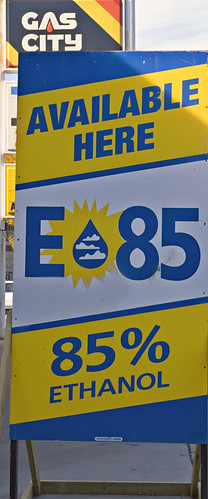(Sources contributing to this hybrid report: The Hill, Guardian, UK & NY Times)
Refiners Warn of ‘Staggering’ Costs, Job Losses From Senate Climate Bill
A Senate climate change proposal could add 77 cents a gallon to the price of gasoline, according to Domestic oil refiners. A group of refiners used the possible price hike on Wednesday to launch the latest in a series of attacks against the proposal. The CEO of refining giant Valero Energy Corp. also warned today that the Senate climate legislation would give a competitive advantage to foreign refiners and cost U.S. jobs.
But Democrats on a key Senate panel shot back, saying the industry’s estimate is based on an inflated projection of the price of permits companies will have to hold to cover their carbon emissions. A cost containment mechanism will keep the price from approaching the industry’s estimate, supporters said.

The lawmakers said the bill will spur industry innovation and that will create millions of new “green” jobs. The chief complaint from refiners is that they wouldn’t get enough free pollution allowances to cover emissions they are on the hook for under the legislation. The Senate bill would give refiners 2.25 percent of the allowances available to cover emissions at their plants. But the industry is also responsible for the emissions from vehicle tailpipes.
To make up the difference, refiners would have to buy emission permits on the market created under the legislation.
Addressing the Senate Environment and Public Works Committee, Valero’s Bill Klesse alleged that the Senate bill and its House counterpart would create large new costs that would drive domestic gasoline and diesel production offshore, cause job loss, and reduce U.S. energy security. He spoke on behalf of the National Petrochemical and Refiners Association, the industry’s main trade group.
“You must remember we are a global business,” Klesse said. “You will simply be driving the carbon dioxide emissions overseas.”
Klesse said Texas-based Valero — a large independent refiner with 16 refineries in the United States, Canada and the Caribbean — would face “staggering” costs even at a carbon price of $20 per ton, he said.
For instance, he said the company’s Corpus Christi, Texas, plant would face costs of up to $92 million per year. The industry as a whole, if held responsible for its process emissions and consumer emissions of its products, would face more than $67 billion in annual costs, he said.
But EPW Chairwoman Barbara Boxer (D-Calif.), a co-sponsor of the bill (S. 1733 (pdf)), attacked Klesse’s conclusion that the bill would harm U.S. security. “The opposite is true,” Boxer said. She cited multiple analyses that conclude global climate change creates national security risks.
The bill would set up a cap-and-trade system under which facilities that produce carbon dioxide emissions must obtain permits for their emissions. Boxer said the bill includes provisions to cushion the effects on refiners. The bill provides 2.25 percent of the free emissions allowances to the refining sector.
Overall, Reicher and other backers of the congressional energy and climate efforts say the effort will increase jobs. “The job creation potential in energy efficiency is extraordinary,” Reicher said.
A major provision is the authorization of so-called border adjustments, or carbon tariffs, on imports from countries that do not adhere to emissions-cutting measures.
The provisions, a priority for lawmakers from manufacturing states, are aimed at preventing “carbon leakage,” in which energy-intensive manufacturing and jobs migrate to countries that do not impose emissions-cutting mandates.
The Senate bill also joins the House bill in providing free allowances to these trade-exposed, energy-intensive industries, although the formulas differ slightly.
The Senate plan provides these sectors with 4 percent of the cap-and-trade program’s freely distributed allowances in 2012 and 2013, rising to 15 percent in 2014 and 2015 and then phasing down after that.
The epic confrontation about how America will power the economy of the future formally got underway on October 27 amid stark warnings from the Obama administration of the costs of inaction on energy reform.
The first of three blockbuster sessions in the Senate held on Oct 27th can be held as a last heave by administration officials and Democratic leaders to advance a bill to reduce America’s greenhouse gas emissions before an international climate change meeting at Copenhagen, now just six weeks away.
American legislation on climate change is seen as essential to reaching a meaningful deal at Copenhagen. But the White House held up action in the Senate on a climate change bill to focus on healthcare reform. The proposed law, which now stretches for more than 900 pages, would cut America’s greenhouse gas emissions by 20% over 2005 levels by 2020 and encourage the development of renewable energy sources like wind and solar power. Democratic leaders in the Senate are now struggling to advance a bill – which does not have solid support even among their own party – before the meeting in Copenhagen.
Click here to read more on this topic.







